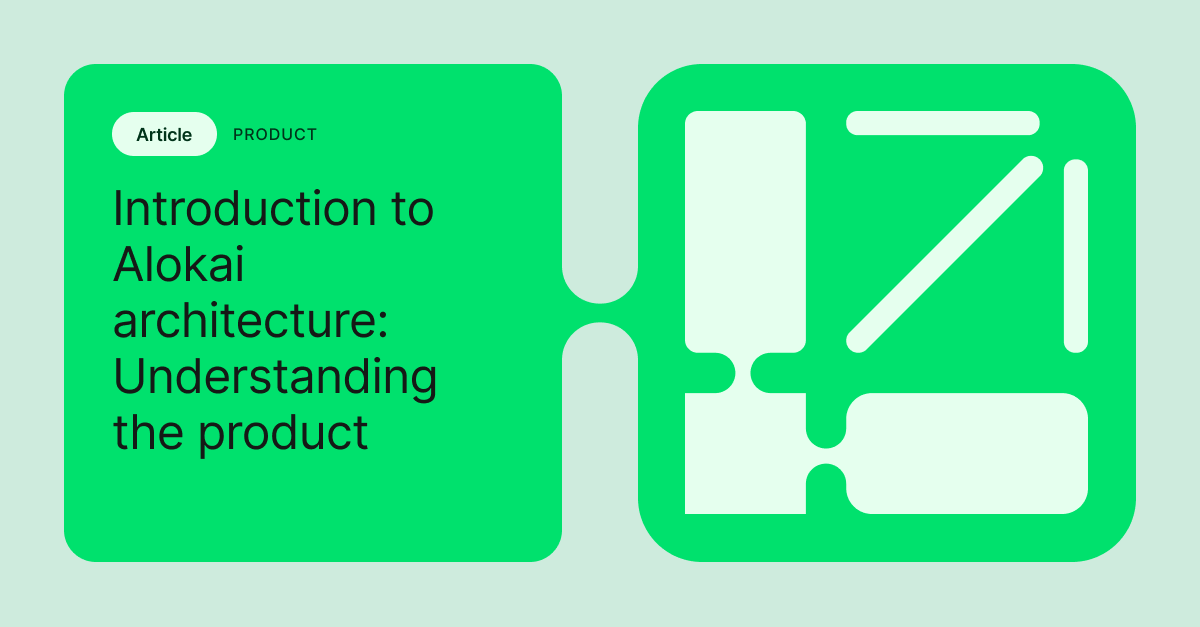Alokai is Becoming JavaScript Framework Agnostic: A Q&A Guide to Our Upcoming Public Release
You will soon hear new exciting product announcements coming from Alokai, including the release of JavaScript framework agnostic integrations and a brand new frontend library. Our aim is to keep you informed and provide you with a better understanding of the recent changes. This is why we have put together this Q&A article that equips you with answers to all the questions you might have.
What is changing?
Our goal for 2023 is to make our product JavaScript framework agnostic, extending beyond Vue.js and providing more flexibility to developers who prefer React. This change will also simplify the process of upgrading to newer versions of the chosen framework.
To achieve this, we have updated our architecture, creating a framework agnostic SDK that serves as a future-proof layer between the frontend and middleware. We are currently implementing this for commercetools, SAP Commerce Cloud, Contentful and Contentstack integrations.
Additionally, we released a brand new version of our UI components library – Storefront UI 2, which is now based on Tailwind CSS and includes basic atomic components and more advanced eCommerce UI elements for both React and Vue.js.
Q&A
What is SDK?
We introduced a new Software Development Toolkit (SDK) layer in our architecture. The Alokai SDK provides a public interface that exposes a set of predefined methods to communicate with other services, like an eCommerce backend, or a Content Management System (CMS). The SDK is modular and can be extended to support additional services and functionalities. Our SDK uses Typescript methods that provides the followings:
- Connect tools with Alokai
- Handle data & network errors
- Get data such as products, categories, cart, customer etc.
- Manipulate cart and customer data
Is there anything I have to do now to my current implementation to keep things working?
No, there is no need to do anything with the currently operating project to keep it working. We will be introducing new features and fixes leveraging the new SDK based approach, but any future changes can be introduced step by step.
Will I be forced to migrate to the SDK version of Alokai?
No, there is no need to do any urgent migration or refactor. We will provide a migration path and will recommend it in the long run but we will not be enforcing it.
How long will you support the current versions of Alokai 2?
We do not have a strict time limit for the sunset of Alokai 2 support. We plan to support the existing customers for as long as needed.
Will there be a migration path from the current version of VSF to the SDK version?
Yes. We will provide a clear migration path allowing gradual introduction of the new SDK-based architecture.
Is Vue.js still going to be supported?
Yes, Vue.js remains one of key parts of Alokai offer. It will be supported with or without the SDK.
What will be the difference between the React and Vue.JS storefront versions?
The difference will be only in the framework used, the scope of covered functionalities and visual designs will be identical.
What integrations are available with React?
At the moment, we are providing React integrations with commercetools, SAP Commerce Cloud, Contenstack and Contentful.
When will React be available for other integrations?
We'll gradually roll out existing integrations in the new version, and more throughout the year.
We want to use the new integration. What's next?
We will allow a migration scenario where you will be able to use the SDK in your project. Reach out to your Customer Success Manager to discuss your migration path.
What is the roadmap for the old integrations (non-SDK)?
Old integrations will be maintained but we will not be adding new features there.
Is there a difference in pricing between Alokai with or without SDK?
No, the pricing remains the same for both versions of the product.
What is the difference between Atomic Design and the new approach in Storefront UI?
Storefront UI 1 was built around the Atomic Design concept, and we don’t follow it anymore in Storefront UI 2. However, the principles are very similar. Instead of atoms, we provide "Base components", the core concept is exactly the same, they are the smallest building blocks of a frontend, and they are fully customizable
We also provide "Blocks", and they are similar to what we originally called molecules or organisms. They are examples of what you can build from Base components - combination of a few or many Base components. These Blocks will be provided in the docs, and users can copy-paste them into their codebase.
Wrap-up
We hope to have covered all the top of the mind questions you might have regarding the new product updates. Should you have further questions, please don’t hesitate to reach out to your Customer Success Manager.












